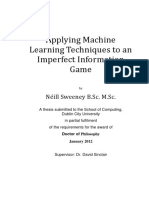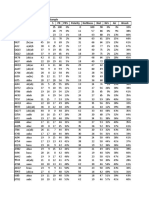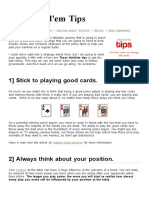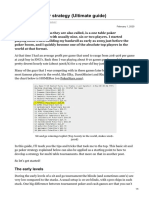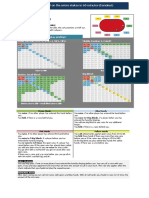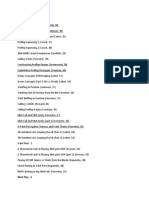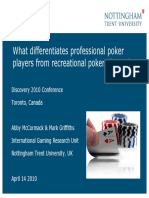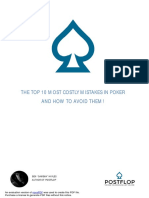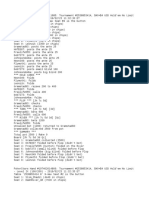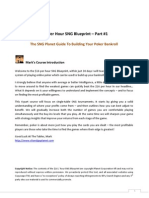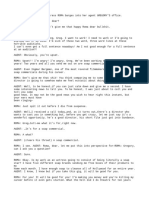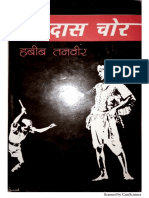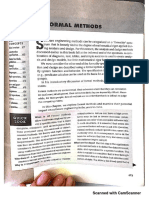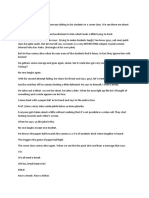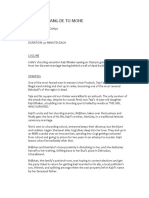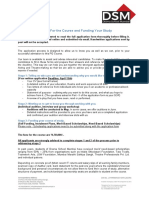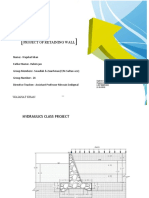0% found this document useful (0 votes)
235 views8 pagesPoker Notes
The document discusses different playing styles against aggressive players and strategies for reading opponents. It provides tips for using different styles like hammering or roping an aggressive player depending on hand strength. It also discusses strategies for playing against aggressive players like tightening one's game and playing fewer but more aggressive hands. The document emphasizes remembering opponents' tendencies and using that information to make optimal plays.
Uploaded by
Sahil BhasinCopyright
© © All Rights Reserved
We take content rights seriously. If you suspect this is your content, claim it here.
Available Formats
Download as TXT, PDF, TXT or read online on Scribd
0% found this document useful (0 votes)
235 views8 pagesPoker Notes
The document discusses different playing styles against aggressive players and strategies for reading opponents. It provides tips for using different styles like hammering or roping an aggressive player depending on hand strength. It also discusses strategies for playing against aggressive players like tightening one's game and playing fewer but more aggressive hands. The document emphasizes remembering opponents' tendencies and using that information to make optimal plays.
Uploaded by
Sahil BhasinCopyright
© © All Rights Reserved
We take content rights seriously. If you suspect this is your content, claim it here.
Available Formats
Download as TXT, PDF, TXT or read online on Scribd
/ 8






